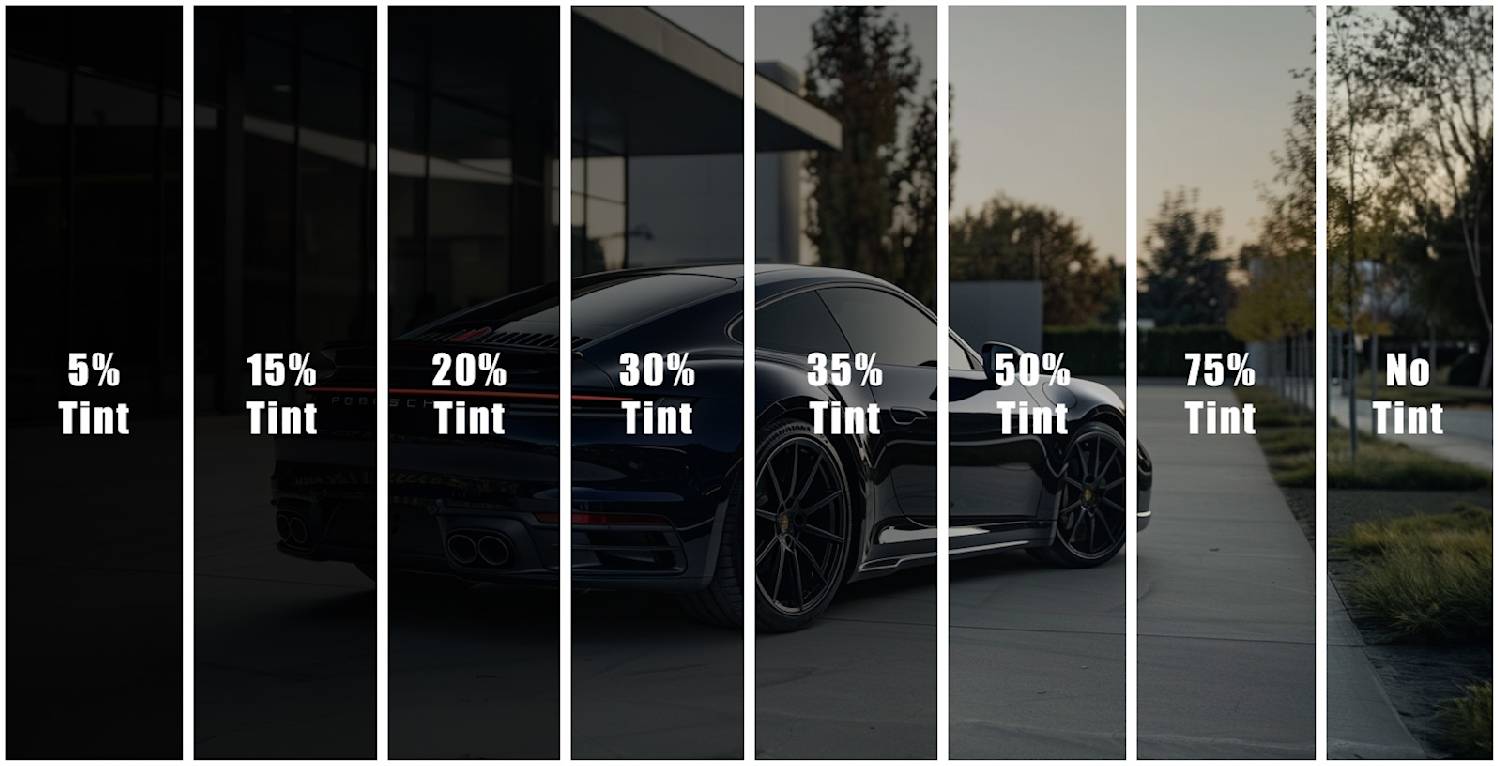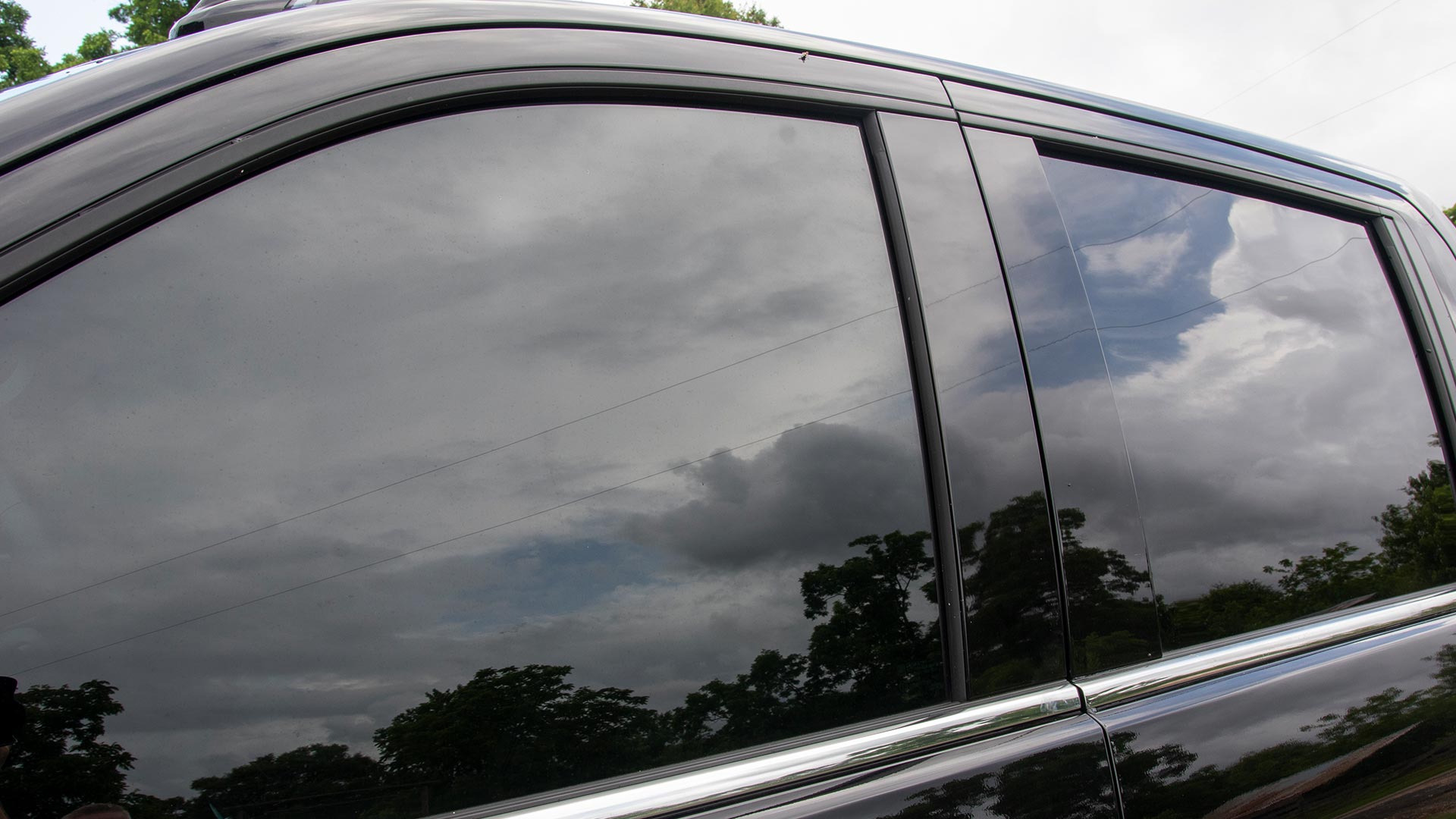A Comprehensive Guide to Comprehending Car Home Window Color and Its Advantages
Automobile window tinting offers greater than just an aesthetic objective for cars. It offers numerous types, each with distinctive functions and advantages. Recognizing these alternatives, along with legal laws and upkeep pointers, is crucial for any kind of automobile owner. The benefits might greatly boost driving comfort and automobile long life. As one discovers the subtleties of window tinting, the question emerges: what sort of color is ideal fit for specific requirements?
Understanding Automobile Window Tint: What It Is and Just how It Works
Vehicle window tint serves as a safety barrier that improves vehicle looks while providing useful benefits. This slim movie is applied to the indoor surface area of car windows, reducing glare and blocking hazardous ultraviolet (UV) rays from the sun. By filtering system sunlight, automobile home window tint helps to control the indoor temperature level of the lorry, bring about increased comfort for travelers and minimized reliance on air conditioning.Additionally, it secures the automobile's interior from fading, protecting both upholstery and dashboard products. The color can likewise boost privacy, making it harder for outsiders to see inside the vehicle. In addition, certain kinds of home window color can increase security; in the occasion of an accident, the movie aids hold destroyed glass together, minimizing the threat of injury from flying fragments. On the whole, automobile home window color offers both aesthetic and useful purposes, making it a popular selection amongst automobile proprietors.
Kinds Of Home Window Tint: An Overview of Options
When considering window color options, several kinds are available, each with unique attributes. Colored, metalized, and ceramic home window colors offer varying levels of warmth being rejected, UV protection, and visual charm. Recognizing these differences can help automobile owners make educated options based on their needs and preferences.
Dyed Window Tint
Dyed home window color stands for a prominent option among cars and truck proprietors looking for a budget-friendly and reliable method to boost their automobile's visual appeals and personal privacy. This kind of tint is developed by putting a layer of dye between a safety covering and a glue layer, resulting in a darkened appearance that minimizes glare and enhances visual comfort. While dyed window tint successfully obstructs unsafe UV rays, it might not offer the exact same level of heat denial as various other tint types. Furthermore, its color can discolor over time, possibly decreasing its efficiency. Regardless of these drawbacks, dyed home window color stays preferred for its cost-effectiveness and capacity to supply a smooth, stylish want to different automobile versions.
Metalized Home Window Color
Metalized window color supplies an equilibrium of design and performance, making it a preferred option among car owners. This sort of tint incorporates metallic particles within the movie, improving both aesthetic allure and warm rejection. The reflective top quality of metalized tint assists to lower glare and enhance personal privacy, while likewise providing UV protection, which safeguards the car's interior. In addition, metalized window color can enhance window toughness, possibly protecting against smashing during mishaps. It is important to note that the metallic components can conflict with electronic signals, such as GPS and cell phone reception. In general, metalized home window color supplies an effective service for those seeking a mix of sunlight, appearance, and sturdiness protection for their vehicles.
Ceramic Window Tint
Ceramic home window tint stands for a sophisticated option in the range of automotive home window movies, offering distinct benefits over conventional tints. Unlike dyed or metalized films, ceramic colors utilize innovative ceramic particles, which efficiently deny heat and UV rays without jeopardizing exposure. This innovation guarantees that cars stay cooler, lowering reliance on a/c and boosting gas effectiveness. Furthermore, ceramic home window colors are much less most likely to hinder electronic devices, such as general practitioner or mobile signals, making them a useful choice for modern vehicles. Furthermore, their resilience and scratch resistance add to a longer life-span compared to other kinds of colors. On the whole, ceramic home window tint supplies remarkable efficiency, comfort, and security, making it a preferred alternative for discerning lorry owners.
Advantages of Automobile Window Color: Beyond Aesthetics
While numerous people associate vehicle home window color with boosted design, its advantages expand far beyond see here plain aesthetic appeals. One significant benefit is warmth decrease; window tint can block as much as 99% of dangerous UV rays, keeping the indoor cooler and safeguarding upholstery from fading. This not only boosts convenience throughout heat however also decreases reliance on air conditioning, causing enhanced fuel efficiency.In addition, vehicle home window tint provides an added layer of privacy and safety. Colored home windows make it difficult for outsiders to see inside the vehicle, which can hinder theft and secure valuables. Furthermore, several colors reinforce the glass, minimizing the likelihood of ruining in case of a crash, thus enhancing safety.In addition to these functional advantages, automobile window tint can also add to glare decrease, boosting presence for passengers and vehicle drivers alike. This multifaceted technique to convenience and safety and security makes window tint a valuable investment for vehicle owners.
Lawful Factors To Consider: Tinting Regulations by State
Prior to dedicating to vehicle home window color, automobile proprietors have to navigate a complex landscape of tinting laws that differ by state. Each state has particular regulations governing the permissible degrees of color darkness and reflectivity for different home windows, including windshields, front side windows, and back windows. These policies frequently include visible light transmission (VLT) percentages, which determine just how much light can pass through the colored glass.Some states permit darker colors on rear home other windows while limiting front side and windshield colors for safety reasons. In addition, specific states may need a certificate from the supplier to validate compliance with tinting laws. Breaching these policies can cause fines, necessary elimination of the tint, or both. Subsequently, it is crucial for lorry proprietors to research their state's legislations thoroughly to ensure legal compliance prior to setting up window tint. This diligence can save money and time over time.
Picking the Right Tint: Elements to Think about
When picking the appropriate window color for a car, a number of vital factors come into play. Tint darkness degrees, UV protection ratings, and compliance with lawful policies are important considerations to assure both aesthetic appeals and performance. Evaluating these aspects will certainly aid individuals make an educated choice that satisfies their requirements and abides by regional laws.
Color Darkness Degrees
Picking the proper color darkness level is essential for achieving the desired balance between appearances and functionality in automobile home window tinting. Different states have varying lawful regulations pertaining to tint darkness, which can impact the choice. Typically, tints are determined in percentages, with lower percents suggesting darker shades. Darker tints supply raised privacy and a streamlined look yet can lower presence, particularly at evening. On the other hand, lighter tints keep a more open feeling, making sure ample visibility while still offering some warm and glow reduction. When making a choice, individuals must consider their driving routines, regional legislations, and personal preferences. Inevitably, the appropriate tint darkness degree improves the car's appearance while making sure security and compliance with lawful requirements.
UV Defense Rating
Color darkness degrees play a significant function in the total effectiveness of automobile home window tinting, however another essential element to evaluate is the UV defense score of the chosen tint. This ranking shows the portion of hazardous ultraviolet rays that the tint can obstruct. High-grade colors commonly provide 99% or more UV defense, protecting guests and the lorry's interior from sun damages. Davinci of Michigan. Prolonged exposure to UV rays can bring about skin issues and fading of upholstery, making a high UV defense score essential for health and wellness and longevity. When selecting window color, consumers ought to prioritize this ranking along with darkness degrees to ensure maximum comfort and security while driving. Comprehending these elements help in making an informed choice when buying vehicle home window tinting
Legal Rules Conformity
Comprehending local lawful laws is important for anybody thinking about car home window tinting. Each state or region has certain laws governing the permitted levels of color darkness and reflectivity for various home windows. These regulations often specify the visible light transmission percent, establishing just how much light can travel through the colored glass. Non-compliance can cause fines, obligatory removal of the color, or issues during car inspections. Additionally, some areas might have constraints on making use of particular tinting materials, calling for consumers to pick items that satisfy security standards. It is crucial for car owners to investigate their regional laws extensively prior to choosing window tint to assure compliance and avoid prospective lawful problems.

Setup Refine: do it yourself vs. Professional Providers
How does one determine in between a DIY setup and hiring expert services for car home window tinting? The choice usually pivots on budget, experience, and wanted results. A DIY method can be affordable, enabling individuals to reduce labor costs. However, it calls for a specific level of ability and expertise regarding the tinting process. Those who are meticulous and person may find success with DIY sets readily available in the market.Conversely, professional services supply expertise and top quality products, guaranteeing a flawless surface. Specialists frequently assure their job, providing comfort versus possible problems such as peeling off or bubbling. Furthermore, they know with local regulations concerning official site tinting, which can be complicated for the ordinary cars and truck owner.Ultimately, the choice mirrors a balance in between expense, individual capability, and the anticipated top quality of the tinting work. Each alternative has its benefits, and the ideal option depends upon specific situations and choices.
Maintenance Tips: Maintaining Your Tint in Top Condition

Regularly Asked Questions
For How Long Does Home Window Color Commonly Last on a Lorry?
Home window color usually lasts between 5 to 10 years, relying on elements such as high quality, application, and environmental problems. Normal maintenance and correct treatment can prolong its lifespan, making certain suitable performance and look with time.
Can Home Window Tinting Damages My Auto's Original Glass?
Home window tinting, when used appropriately, does not damage an auto's original glass. Improper installation or low-quality products may lead to issues like peeling off or gurgling, potentially influencing the glass's stability over time.
Is Window Tinting Safe for All Kinds Of Cars?
Window tinting is generally secure for most automobiles, gave the movie adheres to regional policies and is correctly used. Some specific lorries may need specific factors to consider, making it crucial to consult specialists prior to installment.
Will Window Tinting Void My Car Service Warranty?
The concern of whether home window tinting voids an auto service warranty usually depends on the maker's policies. Normally, if the tint does not damage the lorry, warranties normally stay intact. Getting in touch with the dealership is suggested.
Can I Remove Home Window Color Myself if Needed?
Eliminating window color oneself is feasible, but it calls for mindful attention to prevent harming the glass. Individuals need to make use of proper tools and strategies to assure a successful elimination without leaving adhesive deposit or scratches behind. While dyed home window tint successfully obstructs harmful UV rays, it might not provide the exact same degree of heat rejection as other tint types. Ceramic window color stands for a sophisticated option in the range of auto home window movies, offering unique advantages over traditional tints. Prior to devoting to car home window color, automobile proprietors should browse a complex landscape of tinting regulations that differ by state. These guidelines usually consist of visible light transmission (VLT) percentages, which dictate just how much light can pass through the colored glass.Some states allow darker colors on rear windows while limiting front side and windshield colors for security factors. Color darkness levels play a considerable duty in the total efficiency of vehicle home window tinting, yet another crucial variable to examine is the UV security ranking of the chosen color.